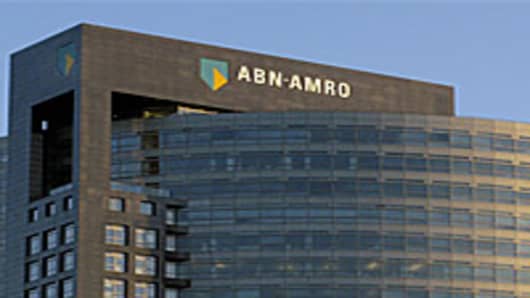ABN Amro, the Dutch bank that has seen two of its three post-crisis owners collapse, is on a mission to re-emerge as a force in the sector and has promised to be a buyer of euro zone financial assets that capital-stretched banks are preparing to sell.
Gerrit Zalm, the former Dutch finance minister who is now chief executive of the nationalized rump of ABN, said he had “spoken to almost all” of its European rivals about the idea.
In an interview with the Financial Times he said: “We are very well capitalized and we’re not in a position to have to shrink our balance sheet. We are certainly interested in taking over portfolios.”
euro zone policymakers are intent on forcing big banks to boost capital ratios, prompting many lenders to pledge a mass divestment of assets.
The plan for portfolio acquisitions is part of a project by ABN, which had all but disappeared as a brand outside its home market, to rebuild its identity as an international bank.
It has just moved back into the US oil and gas market and is now preparing to open offices in Moscow and Shanghai.
The reborn bank’s expansionist strategy, which many rivals dismiss as destined to fail, risks scaring Dutch taxpayers. But Zalm said ABN’s growth, including its foreign build-up, would be sharply focused in niche areas of strength.
He said: “This time we are extremely focused. We only want to do international activities in areas where we think that we can beat the top banks in the world.”
ABN Amro was supposed to disappear as an entity, when Royal Bank of Scotland, Fortis and Santander split up its international assets between them in a 2007 takeover.
Santander was the big winner, securing ownership of Brazilian unit Banco Real.
But RBS’s takeover of ABN’s investment bank sealed the British group’s demise and state bail-out when funding markets collapsed in 2008.
Fortis also had to be bailed out, with its Belgian half sold to BNP Paribas and the Dutch rump nationalized and rebranded as ABN again.
The group had become a takeover target because its sprawl of international businesses – some highly successful, others dramatically underperforming — made it an attractive break-up opportunity.
Zalm’s drive to expand ABN from its core operations on the Dutch high street — into a bigger force in private banking and involved once again in global commodities trading — is part of a mission to ready the bank for reprivatization, which is scheduled for 2014.
The bank has a current net asset value of 12.5 billion euros, though at current average valuations for European banks, of 60 percent of book value, that would imply a market capitalization of less than 8 billion euros.
However, the Dutch government would be unlikely to proceed unless there is a substantial rebound in valuations.


